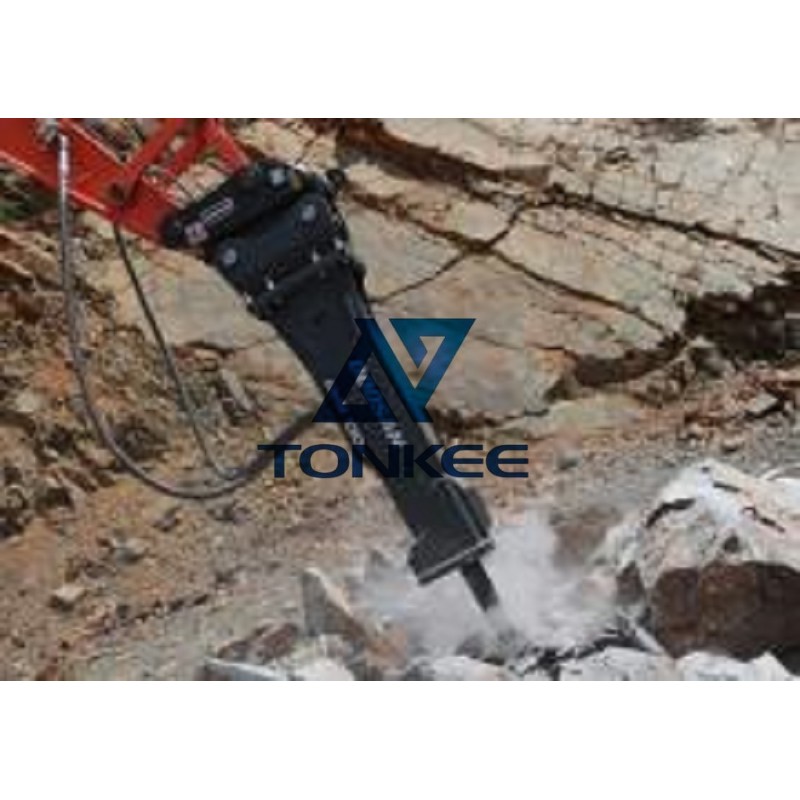
The DXB130H hydraulic breaker hammer boasts a range of features that contribute to its efficiency and performance.
Its robust construction ensures durability and longevity, making it a cost-effective investment for contractors and construction companies. The hammer's build quality allows it to withstand the rigors of demanding job sites, providing a stable and consistent impact force to break through the toughest materials.
One of the key components of the DXB130H is its hydraulic system. This attachment operates using the power from the host machine's hydraulic system, which allows for smooth and precise control of the impact force. The hydraulic system also enables the breaker to operate silently, reducing noise pollution and providing a more comfortable working environment for operators and nearby residents.
With a total length of 2181mm, the DXB130H has been optimized for a balance of power and maneuverability. It is neither too heavy nor too light, striking the right balance to deliver powerful impacts without compromising the host machine's stability during operation. The breaker's design also allows for easy attachment and detachment to the host machine, streamlining the setup process on the job site.
In terms of specifications, the Doosan DXB130H hydraulic breaker hammer has an operating weight that typically falls within a specific range.
Depending on the specific model and configuration, the operating weight can vary, but it generally lies between a minimum and maximum weight limit. This weight range ensures compatibility with a wide range of host machines, including excavators, backhoe loaders, and skid steer loaders.
Additionally, the DXB130H features a specific energy output rating, which is a measure of its impact force. This rating indicates the hammer's capacity to break through different materials efficiently. Higher energy output ratings allow the breaker to handle tougher materials and larger construction tasks.
Furthermore, the hydraulic breaker hammer incorporates various safety features to protect both the operator and the equipment. These safety measures include built-in shock absorption systems, which help reduce the recoil and vibration transmitted to the host machine and operator during operation. This reduces operator fatigue and minimizes the risk of equipment damage.